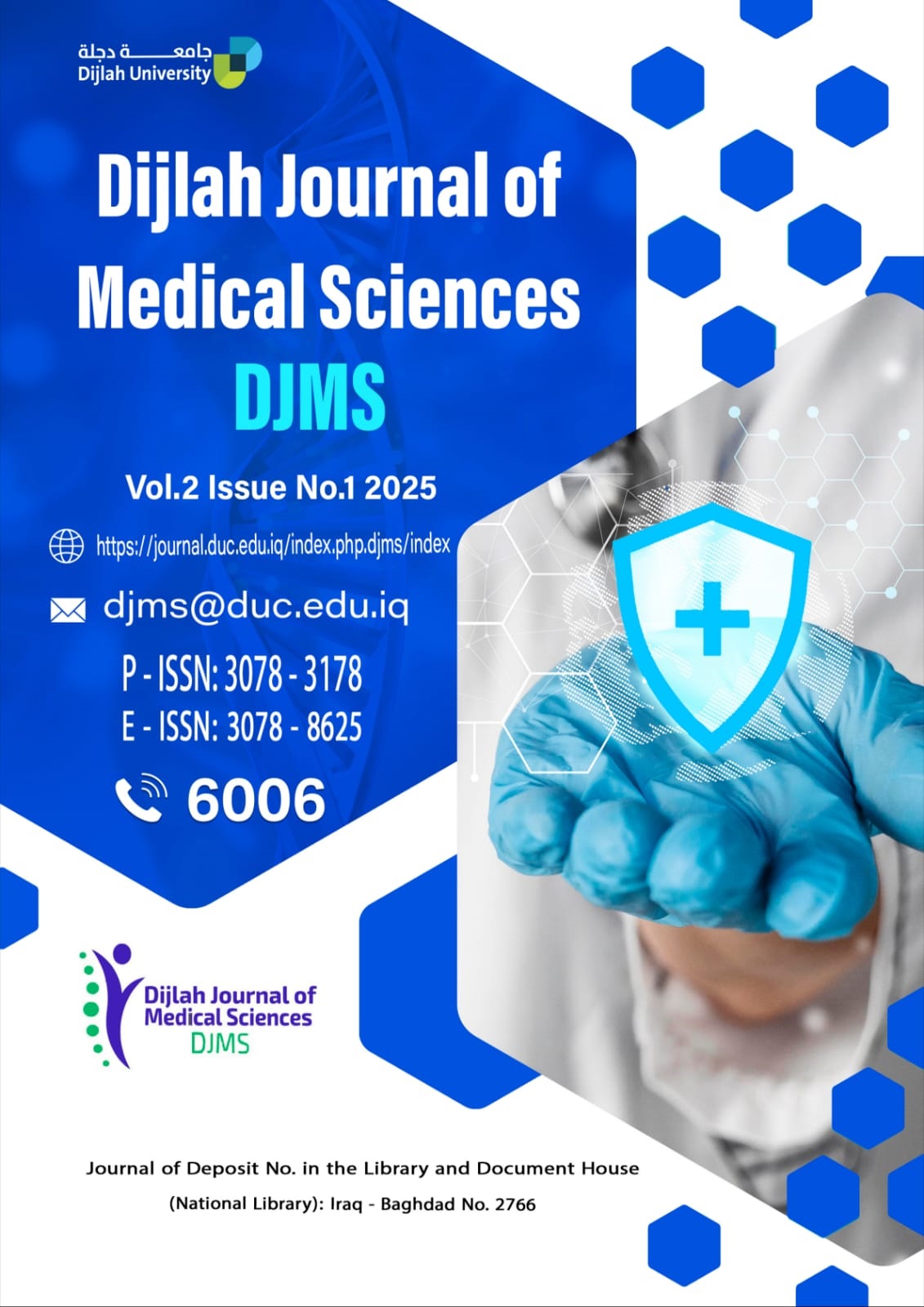The Potential Impact of the H. Pylori infection on the development of Colorectal carcinoma.
Zaid Al-Mashahedi, Essam Mohammed Abdullah and Maher Ali Jasim
DOI:
https://doi.org/10.65204/DJMS-PI-PDKeywords:
Colorectal cancer (CRC) , Helicobacter pylori , Immunohistochemistry (IHC), Serology , AdenocarcinomaAbstract
Abstract
This cross-sectional study investigated the association between Helicobacter pylori (H. pylori) infection and histopathological subtypes of colorectal lesions in 40 symptomatic patients. Serological (ELISA) and immunohistochemical (IHC) methods were employed to detect H. pylori. Demographically, the cohort exhibited male predominance (77.5%) and a mean age of 50.45±17.27 years. Adenocarcinoma was the most prevalent histopathological subtype (27.5%), followed by ulcerative colitis with adenomatous polyps (12.5%). IHC detected H. pylori in 57.5% of patients, surpassing serology (47.5%), which demonstrated low sensitivity (34.78%) and specificity (35.29%). Serum H. pylori positivity significantly correlated with adenocarcinoma (p=0.015), suggesting systemic involvement in carcinogenesis, whereas IHC showed no tissue-specific association (p=0.363), but it indicate direct involvements of the bacteria in development of CRC . These findings underscore IHC’s diagnostic superiority and propose systemic H. pylori status as a potential biomarker for adenocarcinoma risk. Larger studies are warranted to validate these observations.

